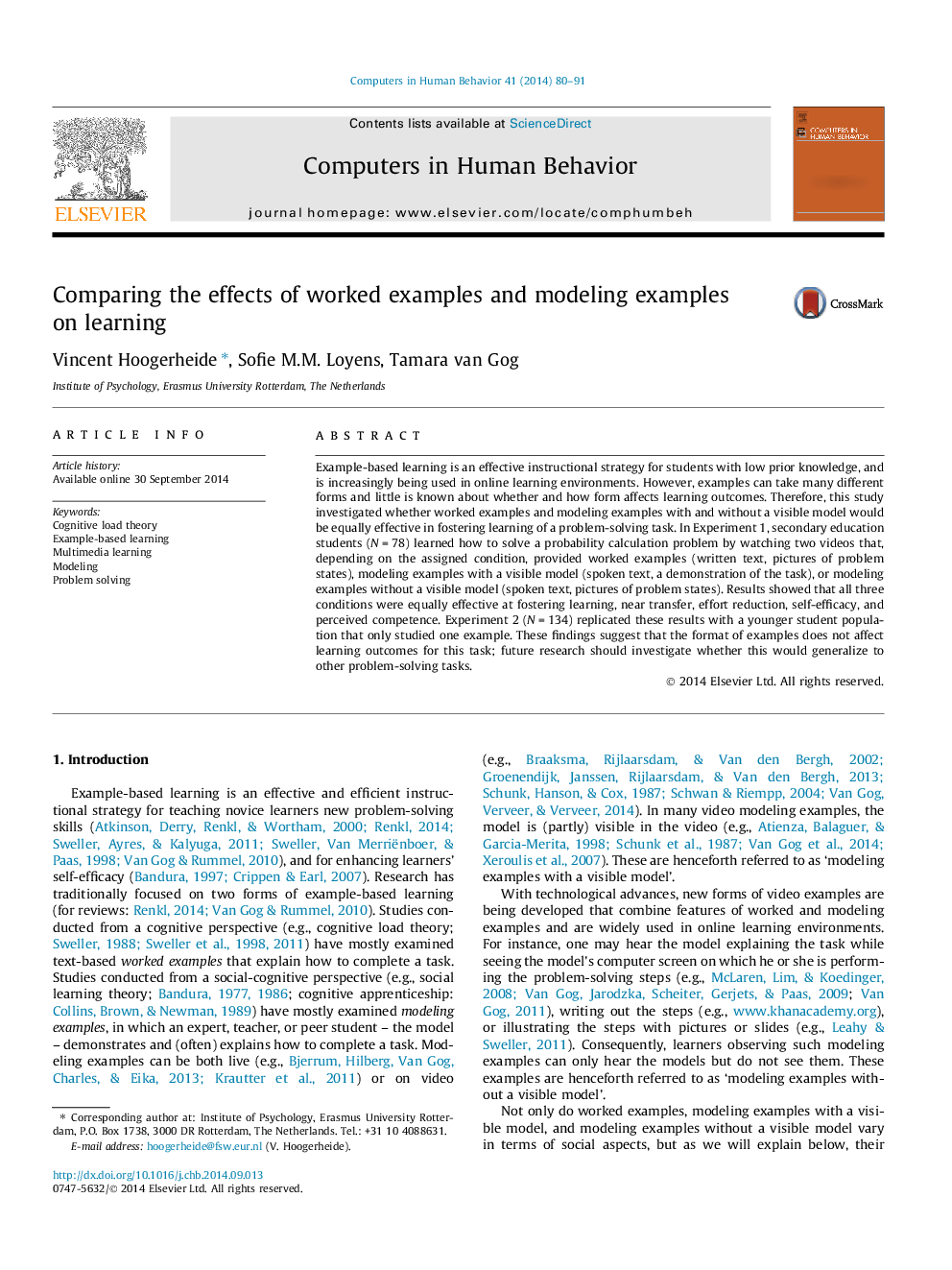| کد مقاله | کد نشریه | سال انتشار | مقاله انگلیسی | نسخه تمام متن |
|---|---|---|---|---|
| 350378 | 618443 | 2014 | 12 صفحه PDF | دانلود رایگان |
• Two experiments examined how the design of examples affects learning.
• Written text + picture, auditory text + picture, and demonstration examples were compared.
• Adolescents learned how to solve probability calculation problems from these examples.
• Results showed that all examples were equally effective and efficient for learning.
• Presence of human models did not influence self-efficacy or perceived competence.
Example-based learning is an effective instructional strategy for students with low prior knowledge, and is increasingly being used in online learning environments. However, examples can take many different forms and little is known about whether and how form affects learning outcomes. Therefore, this study investigated whether worked examples and modeling examples with and without a visible model would be equally effective in fostering learning of a problem-solving task. In Experiment 1, secondary education students (N = 78) learned how to solve a probability calculation problem by watching two videos that, depending on the assigned condition, provided worked examples (written text, pictures of problem states), modeling examples with a visible model (spoken text, a demonstration of the task), or modeling examples without a visible model (spoken text, pictures of problem states). Results showed that all three conditions were equally effective at fostering learning, near transfer, effort reduction, self-efficacy, and perceived competence. Experiment 2 (N = 134) replicated these results with a younger student population that only studied one example. These findings suggest that the format of examples does not affect learning outcomes for this task; future research should investigate whether this would generalize to other problem-solving tasks.
Journal: Computers in Human Behavior - Volume 41, December 2014, Pages 80–91
